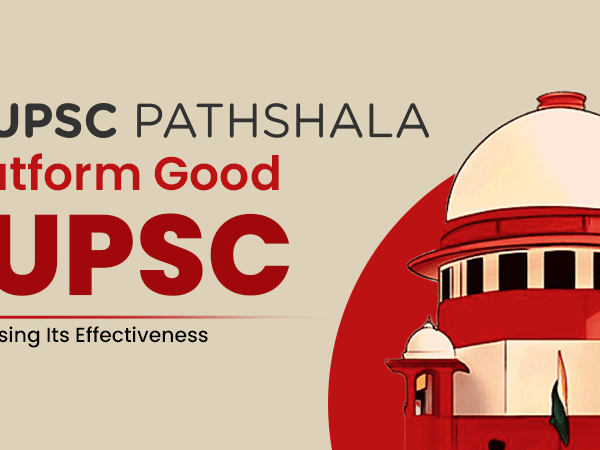One of the essential business supporting element is a mechanism to settle failed or bankrupt entities without causing damage to any players in the economy. Continuation of financially non-viable businesses leads to locking of funds and physical assets. Similarly, it may lead to stress for the lender who have provided loan to the distressed business entity. For this, a bankruptcy code in the form of set of laws for the resolution of failed entities/individuals is needed.
Insolvency is when an individual, corporation, or other organization cannot meet its financial obligations for paying debts as they are due. Insolvency can occur when certain things happen, some of which may include: poor cash management, increase in cash expenses, or decrease in cash flow. A finding of insolvency is important, as specific rights are enabled for the creditor to exercise against the insolvent individual or organization. It is possible that a business may be “insolvent” in cash flow, yet still solvent on the balance sheet. Bankruptcy is a legally declared inability or impairment of ability of an individual or organization to pay its creditors. Creditors may file a bankruptcy petition against a business or corporate debtor (“involuntary bankruptcy”) in an effort to recoup a portion of what they are owed or initiate a restructuring. In the majority of cases, however, bankruptcy is initiated by the debtor (a “voluntary bankruptcy” that is filed by the insolvent individual or organization). An involuntary bankruptcy petition may not be filed against an individual consumer debtor who is not engaged in business. Bankruptcy was originally planned as a remedy for creditors — not debtors.
The research shows that India has more than 11% of bad debt records out of the total lending and it is increasing day by day. The time taken to resolve a case of insolvency is very high as compared to many other countries of the world. Due to this issue, India ranks 100th in ease of doing business in the world. More than 50% of bad debts are that of Corporates who have taken such loans from nationalised banks. The recovery from such defaulters is generally next to impossible because of a number of reasons like overlapping jurisdictions etc. Hence, these cases continue for years and years but the recovery remains zero. Previously there were about twelve laws which dealt with insolvency. Based on those twelve laws, it took more than four years to wind up a corporation in our country. Due to lack of required institutional and legal setup, the defaulters started considering India as a safe haven for such activities which clearly depicted incompetence on the part of our country when compared to global standards. Although India had numerous acts in place to punish the defaulters like the Indian Contract Act, the Sick Industrial Companies (Special Provisions) Act, 1985 (SICA) the Recovery of debts due to Banks and Financial Institution Act 1993, the Securitizations and Reconstruction of Financial Assets and Enforcement of Security Interest Act, 2002, and so on has failed miserably to recover to the outstanding dues from the defaulters. The aforesaid laws had many loopholes which kept the defaulters fear free and safe. If there is no fear of law, this scenario is likely to happen.
Based on the above mentioned increasing issues, the government finally decided to take some stand. The Government decided to replace the existing insolvency laws with new stringent laws which would take care of the existing defaulters in a time bound manner and also set an example for the people of the country who considered this activity of wilful defaulting as a gag. It was on 11th of May, 2016, when the Insolvency and Bankruptcy Code, 2016 was passed by both the houses and received the assent of the President on 28th of May, 2016. The Code offered a uniform, comprehensive insolvency legislation encompassing all companies, partnerships and individuals (other than financial firms). The Code provides clear, coherent and speedy process for early identification of financial distress and resolution of entities if the underlying business is found to be viable. It suggests two options – a restructuring if the firm is viable and liquidation if it is not financially viable.
The Insolvency and Bankruptcy Code, 2016 has repealed a number of outdated acts. In order to sidestep any further litigation in insolvency proceedings, this new Code shall overrule all other laws and Acts. The Code clearly states that the Courts shall not have the authority to grant any injunction as it shall not be a part of their jurisdiction. The new law in the form of Code has replaced a number of laws which were earlier prevailing thereby proving to be an important step in developing the procedure of recovery of bad debts. The Code specifies a timeframe — 180 days after the process is initiated, plus a 90-day extension for resolving insolvency. A major feature of the Code is that it creates a four pillars of institutional infrastructure for administering the bankruptcy procedure. These entities/agencies are:
Insolvency and Bankruptcy Board of India: is the regulator that will oversee the new entities.
Insolvency Professionals: will conduct the insolvency resolution process, take over the management of a company, assist creditors in the collection of relevant information, and manage the liquidation process,
Insolvency Professional Agencies: will examine and certify the insolvency professionals, and
Information Utilities: collect, collate and disseminate financial information related to debtors,
On 23rd November, 2017 The Insolvency and Bankruptcy Code (Amendment) Ordinance, 2017 was Promulgated by the President of India, which amends the existing Insolvency and Bankruptcy Code, 2016, in order to strengthen the insolvency resolution process. The Ordinance amends section 2, 5, 25, 30, 35 and 240 of Insolvency and Bankruptcy Code of 2016 and inserts new section 29A and 235A. Section 29A, new addition to the code, makes certain persons ineligible to be a Resolution Applicant. Those being made ineligible are Wilful Defaulters, who are associated with Non Performing Assets, who have executed an enforceable guarantee in favour of a creditor. Section 235, new addition to the code, provides for punishment for breaking provisions where no specific penalty or punishment was provided earlier.
The Insolvency And Bankruptcy Code (Amendment) Act, 2017 received the assent of the president on the 18th january, 2018. The bill amends insolvency and bankruptcy code, 2016, and replaces ordinance promulgated in november 2017 to pave way for tightening loopholes in existing code and make resolution process more effective. The Act,
1. Prohibits certain persons from submitting resolution plan in case of defaults. These include:
(i) wilful defaulters,
(ii) promoters or management or management of the company if it has outstanding non-performing debt for over year and,
(iii) disqualified directors, among others.
2. The bill bars the sale of property of a defaulter to such persons who is ineligible to be a resolution applicant during liquidation.
3. It inserts provision to specify that person contravening any provisions of IBC, for which no penalty has been specified, will be punishable with fine ranging between Rs. 1 lakh to Rs. 2 crore.
4. It allows ARCs, banks and alternative investment funds registered with SEBI of India to bid for Insolvent companies.
5. The bill allows the promoter to submit a resolution plan after clearing overdue amounts with interest and other charges.
The Insolvency and Bankruptcy Code is thus a comprehensive and systemic reform, that ensures speedy solution to insolvency and bankruptcy. Such a swift procedure will help creditors considerable as well as avoid distressed firms negatively affecting the economic and financial activities. The Code is big stride for ease of doing business in India.
Insolvency and Bankruptcy : Economy notes for UPSC preparation
Show Comments




